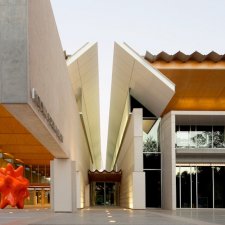- About us
- Support the Gallery
- Venue hire
- Publications
- Research library
- Organisation chart
- Employment
- Contact us
- Make a booking
- Onsite programs
- Online programs
- School visit information
- Learning resources
- Little Darlings
- Professional learning
Henry Lawson (1867–1922), one of Australia’s best-known authors, wrote short stories and ballads depicting the hardship of bush life. Lawson spent his childhood on a poor selection in the Mudgee district in New South Wales. He received little formal education, but he was encouraged to read widely by his mother, the women’s rights activist and writer, Louisa Lawson. A regular contributor to the Bulletin in the 1890s, he supported its nationalist, egalitarian and pro-union stance. In that decade, too, he wrote scores of stories and vignettes, the best of them – such as ‘The Drover’s Wife’ and ‘The Bush Undertaker’– haunting, profoundly sad and wryly funny all at once. Despite catastrophic bouts of depression and alcoholism that turned him into a shambling wraith, Lawson continued to write until his death in Sydney at the age of 55, when he was honoured with a State funeral.
William Johnson’s portrait of Henry Lawson was taken using a ‘multiplying camera’ which enabled the creation of several separate images on a single negative.
Collection: National Portrait Gallery
Purchased 2012



On one level The Companion talks about the most famous and frontline Australians, but on another it tells us about ourselves.



Sarah Engledow ponders the divergent legacies of Messrs Kendall and Lawson.



Visit us, learn with us, support us or work with us! Here’s a range of information about planning your visit, our history and more!